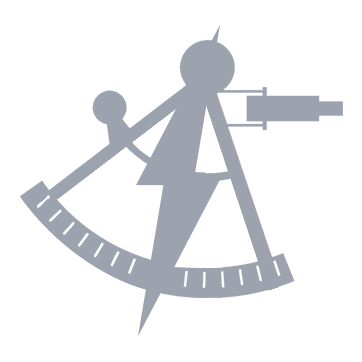Amador City had pulled up alongside Arcturus a few hours after efforts to begin upgrades at the Sentinel Major outpost had begun. A California-class utility cruiser, she was stuffed to the rafters with passengers, which included Starfleet personnel removed from minor outposts Starfleet deemed unnecessary to the storm response and refugees from vulnerable worlds. Crucially, she’d brought almost two hundred civilians who had been wounded when electrical interference from the Century Storm had caused a fusion reactor to overload on a nearby dilithium cracking station. There was ward space for 120 between the two sickbay complexes, but one of the cargo bays had been converted for intermediate care, and some of the guest quarters were holding patients that were well enough to be somewhat independent but still needed medical care. It was a test that would have been easier with the ship’s two senior medical officers present, but Dr. Sheppard was managing the situation well as acting chief medical officer.
Meanwhile, Lieutenant Commander Navarro was standing in for the absent Commander Alesser in operations, managing the needs of the other 1,484 refugees with Counselor Carver (also a deputy stepping up) and Mr. Evandrion, who was one of the few senior officers who was not a deputy or second deputy acting temporarily as the head of their department. There was more than enough space; the ship’s complement could comfortably be expanded to up to eight thousand for short and medium-term mission terms between visiting specialists, independent research or engineering teams, and civilians. With the cargo and shuttle bays transformed into housing, the ship’s maximum life support capacity allowed for a total passenger and crew load of twice that for evacuation missions. Those scenarios presupposed that there were no significant vacancies in the ship’s senior leadership roles, though, and the crew were struggling slightly to manage the logistics of having a large group of visitors aboard, even if they weren’t stacked to the rafters.
Just when the passengers from the Amador City had been settled, and the cruiser had rushed off to evacuate another set of outposts, the non-essential personnel from Sentinel Major started to beam up, which was nearly two-hundred more beings to support physically and emotionally. A skeleton team of just a dozen had been left behind on the station, as engineers from Arcturus implemented Starfleet’s upgrade plans with a swarm of shuttles transporting the equipment to each of the dozens of geosynchronous satellites that made up the deep space telescope array. Commander Van Dorland remained on the surface to coordinate with the station’s own personnel, but Lieutenant Commander Odea had at least been able to return to the ship to help manage the situation there.
Even the science department was pressed, converting the core mission labs and the special projects labs to hold what experiments could be removed safely from Sentinel Major. One of the cargo bays also had to be emptied to handle several deceased examples of the planet’s gas whale species, which included an entire skeleton and a few massive stasis chambers with intact specimens.
As soon as Odea had returned to the ship, Captain Okusanya had retreated to main engineering, where she had been much happier to tinker with the schematics of Sentinel Major’s lightning towers than to deal with the tedious logistics of their current situation. Though a captain by rank, she was quickly finding herself a fish out of water trying to run a starship. The technical problem they faced was where her expertise was most needed, she thought, with a significant cadre of experienced bridge officers left up above, even without their permanent positions filled.
“Yellow Alert. Captain Okusanya to the bridge,” Odea’s voice thundered over the intercom right as Okusanya was figuring out the best position for a tertiary energy coupler to add to the station’s energy defense towers.
“What now?” the engineer muttered. “Keep working on this,” she ordered to the other engineers standing around the master situation display table in engineering.
The captain exited main engineering forward towards the bank of turbolifts past the main entrance. The already-busy crew were now at a light jog to their duty stations all around her, and by the time she got to the bridge, it was fully crewed and ready for action.
“Captain on the bridge!” Lieutenant Windsor announced.
“Report,” Okusanya ordered.
“We have a contact approaching, sir. They didn’t appear on long-range sensors, and we’re not entirely sure why. They’re not responding to hails,” Odea replied dutifully. “Protocol states that we must initiate defensive countermeasures upon the approach of an unidentified vessel.”
“I’m aware of the protocol,” Okusanya replied tartly. “Time to intercept?”
“Four minutes, twenty-nine seconds,” the acting tactical officer, Mr. Lykaios, reported. “Based on these readings, it appears to be a Starfleet warp signature, but it’s muddled enough for me not to be confident in that.”
“Better safe than sorry,” the captain agreed. “Tactical plot on main viewer,” she ordered.
Moments later, a diagram appeared on the viewer, showing Arcturus in the center over Sentinel Major, with a red “X” approaching at high warp. They were deep within Federation space, but movements between ships were so carefully choreographed through the operations divisions in each fleet and at each starbase that any unexpected contact was highly unusual. The moments ticked by, and Okusanya was close to declaring red alert when the sensor image finally resolved.
“They have dropped out of warp, and we have visual contact, Captain,” Lykaios said.
“On screen.”
The diagram was replaced with one of the most unusual Starfleet designs that Okusanya was aware of, the obsolescent Centaur-class scout. She was bleeding plasma from her warp nacelles. Off the top of her head, Okusanya knew that a ship like that would not have been able to sustain the speeds they were clocking them at, which could explain the damage. The lettering on the hull was clear: USS Asbestos.
“Hail them again.”
“No response, Captain,” Lykaios reported. “I am detecting substantial electromagnetic interference, though. Their primary communications array has been ionized.”
“They may have passed through the storm,” Windsor offered.
Okusanya rapped her hands on the captain’s chair as she thought about the options. To her, it was clear that they were in no danger; it’s not like a ship of that class would prove to be a threat even if it was hostile.
“I’m also detecting instability in their warp drive and several other systems,” the tactical officer added. “Wait. Visual sensors are detecting a lamp code… ‘Communications damaged. Wounded aboard. Overrode engine safeties. Requesting assistance,’” he read.
“Lower shields,” Okusanya ordered.
“Captain, we need to verify their identity first,” Odea objected.
Okusanya clenched her jaw for a moment. “Do it.”
“Transmitting challenge code,” Lykaios replied. There was a pause. “They’ve returned the correct code. It’s the Asbestos, sir, and they’re not indicating coercion.”
“Good. Lower our shields and order them to hold position,” Okusanya said, standing up from her chair and walking over to one of the engineering stations. “We’re going to use our deflector to deionize their hull to re-establish communications,” she said before making the appropriate modifications to the secondary deflector array. It was faster to just do it herself, after all. “Initiating,” she said.
A brief burst of blue light emitted from the deflector dish, visible on the screen as it resolved into a ray that passed slowly over the hull of the Asbestos to neutralize the charge that was preventing their communications equipment from working. Once it was complete, Okusanya opened a channel.
“Arcturus to Asbestos. Report your status,” Okusanya.
The image of the strange-looking ship on the viewer was replaced with a rather forlorn-looking young man in a red lieutenant commander’s uniform. “Asbestos here. We were attempting to scout the leading edge of the storm, but we underestimated how fast it would advance on our position. We had to disengage engine safeties to get here in time.”
“In time for what, Captain?”
“To warn you. The storm will be here in just under four hours,” he replied.
The bridge went deadly silent for a moment as that news sunk in. They were nowhere near ready for that, not if they had any chance of carrying out their orders to upgrade and protect the sensor array.

 Bravo Fleet
Bravo Fleet






